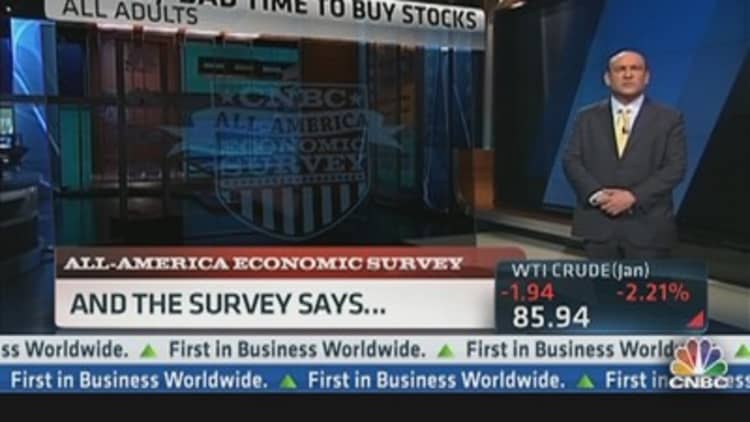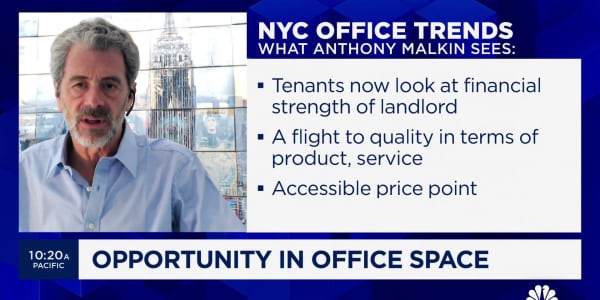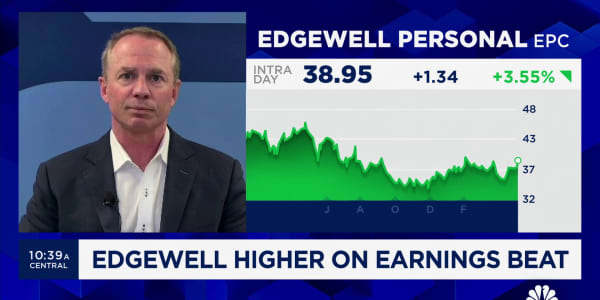With just a few weeks of trading left, 2012 is looking a lot like 2011 in one key regard: Investors still don't believe in a stock market that keeps moving higher.
This year has been even more profitable than its predecessor, with the 12 percent gain in the easily outdistancing the modest rise in 2011.
Still, volume remains low and money continues to pour out of equity funds and into fixed income and cash.
"If the party is so good...where is everybody?" Nicholas Colas, chief market strategist at ConvergEx, asked in his daily market commentary Thursday. (Read More: Why Has Wall Street Gotten So Bullish About Next Year?)
The question has been asked often around Wall Street this year, with total equity fund outflows totaling $125 billion and nearly $300 billion pouring into bonds. Cash parked in money market funds, with near-zero interest rates, also has been on the rise, with $2.61 trillion tucked on the sidelines, according to the latest numbers from the Investment Company Institute.
Many theories have been expounded to try to rationalize the trend away from stocks.
For Colas, the most rational theory may be found in linguistics. While the current stock market qualifies as a "bull" under the conventional Wall Street definition of a 20 percent increase from a designated bottom, it sure hasn't felt like it.
Memories of the financial crisis still weigh heavily, while the general lackluster stock market performance over the past 13 years or so has made it hard to justify the risks.
"Bull markets are just as much about investor sentiment as price action. It's all about the shoeshine boy or the taxi driver dispensing stock tips to their customers and 'irrational exuberance'" and cocktail party chatter," Colas said. "By those measures, we remain in a bear market for U.S. stocks, regardless of what the price action may say."
Indeed, investor sentiment is a fickle thing.
While market trading volume has languished - down 19 percent this year for equities and 13 percent for options - investor sentiment enters December at its highest level since late March. Bullish sentiment is at 42 percent while the bears are at 34.6 percent, according to the latest poll from the American Association of Individual Investors.

Yet AAII members also increased cash allocations in November and cut their stock exposure to its lowest level all year. Charles Rotblut, vice president of the association, attributed some of the disparity to timing of the two surveys, but there's clearly also an unwillingness by investors to put money to work.
"How ever you measure it, it's certainly true that there are just less people playing," said Jim Paulsen, chief market strategist at Wells Capital Management. "I don't really look at that as an indicator of (rally) sustainability. I do look at it as an indicator of where confidence is. People are fearful of the market and are questioning how much of their net worth they want to play with."
Paulsen had been forecasting the S&P 500 to finish the year at 1,500, a number that, while still in play, appears unlikely absent a massive rally. He hasn't set a price target for next year, but believes the index could make a run at 1,565, which would send it to a historic high and possibly engender some long-awaited faith in the market. (Read More: Why Europe Debt Defaults Are About to Rattle Stocks)
"If we were to hit that or breach that, the media treatment and national conversation as it regards investing starts to change from 'are you being conservative enough in this high-risk world?' to 'are you missing out on markets that are at new all-time highs?'"
Bank of America Merrill Lynch has remained bullish through the year, with a 1,450 S&P 500 target, even as it has forecast weak economic growth.
The firm's strategists asserted Thursday that a run past 1,500 is in the cards but needs further confirmation from volume.
"Despite all the valid concerns over the fiscal cliff, the recent 9 percent sell-off has set the market up for the traditional seasonal year-end rally, and possibly carrying over in to a January Effect rally," Mary Ann Bartels, BofA's technical research analyst, said in a note. "However, 2013 is setting up to be volatile, in our view, as the negative divergences are still in place with market breadth and transports not confirming the September highs."
Another gut-churning year would be unlikely to bring regular investors back to the market, even if the bull charges still harder.
"Let's not pretend that labeling the current stock market a 'bull' or a 'bear' means anything to anyone," Colas said. "The fact that investors continue to leave U.S. stocks in spite of their good performance means that this totem has lost its magic."






